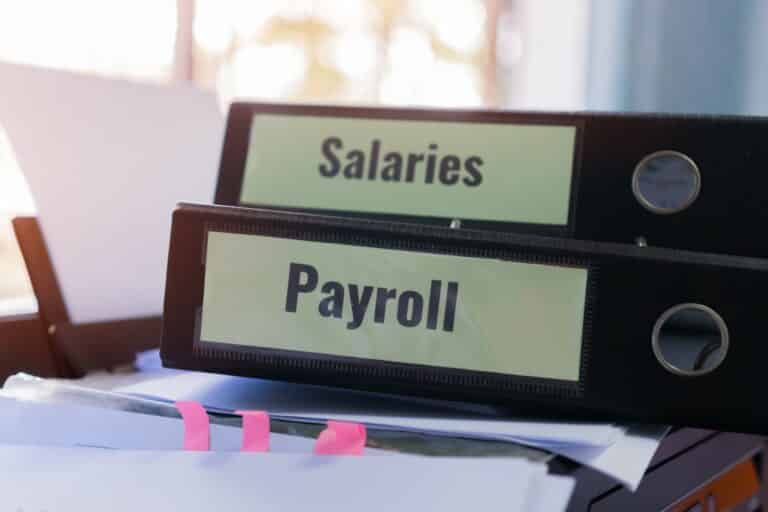Changes related to your payroll administration in 2023

Source: Newsletter wage tax of 14 November 2022 – Dutch tax authorities
In this article, you will find information on the new rules for withholding and paying of payroll taxes as of January 1, 2023. 15 topics are adressed.
1 Increase in untaxed travel allowance
The targeted exemption for untaxed kilometer reimbursement will be increased to € 0.21 per km (2022: € 0.19) as of 2023.
2 Increase untaxed home work allowance
The targeted exemption for the untaxed home work allowance will be increased to € 2.15 (2022: € 2.00) as of 2023.
Article: Travel allowance and work from home allowance
3 Increase free space under the work-related costs scheme
The free margin of the work-related costs scheme will be increased only for 2023 to 3.00% of the wage bill for tax purposes up to and including € 400,000 (2022: 1.7%). For the excess above a wage bill of € 400,000, the percentage of 1.18% will remain unchanged.
During the discussion of the Tax Plan 2023, the question was raised whether the employer can use the (increased) free space of 2023 for the interest benefit the employee has on an interest-free loan from the employer. It can.
A related question is whether the employer can also use the (increased) free space for a (partial) waiver of the loan. That too is possible.
For that, the regular rules apply. The interest benefit or waiver is wages at the time the benefit is enjoyed. The employer can designate that benefit (wage in kind) as final taxable income in order to subsequently make use of the (increased) free allowance. This also applies if the loan was taken out before 2023.
The moment of (partial) remission is the moment at which it is clear that the employee no longer has to repay that amount. The loan agreement must be recorded in your payroll records.
Find out what Expatax can do for you
4 Reduction of Aof premium
So-called “small employers” are subject to the low Aof premium. To accommodate these small and medium-sized employers, the Cabinet has decided to reduce the low Aof premium. How high the premium will be will be announced later.
5 Temporary extension of the low-income benefit (LIV)
The low-income benefit (LIV) is part of the “Wet tegemoetkomingen loondomein” (Wtl). There will be 2 temporary changes, related to the increase of the legal minimum wage:
- For 2022: the amount of LIV paid in 2023 for 2022 will be a one-time € 0.78 per hour worked (was: € 0.48). The maximum amount will be € 1,520 (was: € 960) per employee per calendar year.
For 2023: the amount of LIV paid in 2024 for 2023 will become a one-time € 0.63 per hour worked (was: € 0.49). The maximum amount will be € 1,242 (was: € 960) per employee per calendar year. - The upper limit of the hourly wage is increased. This upper limit will be determined when the July 2023 statutory minimum wage is set.
6 No changes in regulations AWf premium in case of temporary extension of hours and varying work sums before 2023
If an employment contract with your employee is subject to the low AWf premium based on the contract indications (with indications ‘indefinite time’, ‘written’ and ‘no on-call contract’, or with indications Y/Y/N), the low AWf premium will also continue to apply to this employment contract if you include a temporary extension of hours or agree on varying work sums. This is due to an amended position of the State Secretary of Social Affairs and Employment at the end of 2021. As of 2023, there would be further rules on the application of the high or low AWf premium in case of such employment contracts. However, this is not yet the case for 2023: the rules as they apply in 2022 will continue to apply in 2023.
7 High AWf premium for BBL contracts with agency clause
As of 2023, you must apply the high AWf premium for an employee who follows the Vocational Guided Learning (BBL) path where there is an agency clause in the practical contract or in a related employment contract. Until 2022 inclusive, you may still apply the low AWf premium in such a situation, provided the other conditions are met.
8 Changes to the customary salary scheme
There are 2 changes for the customary salary scheme as of 2023.
8.1 Abolition of the exception for innovative start-ups
For substantial interest holders working for so-called ‘innovative start-ups’, an exception to the normal rules of the customary pay scheme will apply until 2022. For them, a relaxed regime applies for a period of up to 3 years. During this period, you may set the customary wage at the statutory minimum wage without consulting the tax authorities. As of 2023, this exception for new cases will expire.
Transitional regime for existing cases
If you use(d) this exception for the first time before the year 2021 or 2022, you may continue to do so for the maximum duration of 3 years. You must then continue to meet the conditions in 2023 (if starting in 2021) and in 2024 (if starting in 2022).
8.2 Abolition of the efficiency margin
When determining the customary wage for a substantial interest holder, you must sometimes use the wage of the most comparable employment. In doing so, up to and including 2022, you may set the customary wage at least 75% of that. This difference of 25 percentage points is also called the “efficiency margin. This margin will lapse as of 2023. You must then set the wage at at least the same amount as that of the most comparable employment.
Transitional arrangement
You may have made an agreement with the tax authorities about the amount of the customary wage that is set out in a so-called ‘settlement agreement’ (vso), valid until after 2022. If this efficiency margin was used in that vso, this agreement on the level of the 100% wage remains in force. For 2023, your usual wage will then be that 100% wage. But if there are relevant changes in your situation that could lead to a different customary wage, you should assume that.
Article: The customary wage scheme for director-major shareholders
9 Lowering the ‘cap’ for private use of electric car
For cars with 0% CO2 emissions, a discount of 6 percentage points applies to the standard addition percentage. You calculate this discount over the basis (usually the list value). For most electric cars, you calculate it over a maximum amount, the so-called “cap. As of 2023, the cap is € 30,000 (2022: € 35,000). The rebate then amounts to a maximum of € 1,800 (2022: € 2,100). The cap does not apply to hydrogen cars and solar cell cars.
10 Changes for extraterritorial expenses and the 30% ruling
An employer can provide tax-exempt reimbursement of certain extra costs to ‘incoming employees’ and ‘outgoing employees’ due to temporary residence in another country (or they can provide or make items available tax-exempt). These are the so-called extraterritorial costs. The employer can choose to:
- Reimburse the actual extraterritorial costs (or provide or make items available) or;
- apply the 30% ruling.
The Tax Plan 2023 contains 2 changes for the 30% ruling:
- as of 2023: an annual choice for application of the 30% ruling or actual extraterritorial expenses.
- per 2024: a capping measure for incoming employees. Note: for some employees, this measure will only take effect as of 2026.
10.1 Annual choice for application of 30% ruling or reimbursement of actual extraterritorial expenses
As long as you may apply the 30% ruling, you must choose each year whether to apply the 30% ruling or reimburse actual extraterritorial expenses. You will make this choice in the first payroll period of the calendar year in which you reimburse extraterritorial expenses. Your choice applies to the entire calendar year. If the 30% ruling ends during the calendar year, any choice for the 30% ruling will end at that time. Once the 5-year period has passed, extraterritorial expenses can usually no longer be reimbursed tax-free.
Effective date of choice for new 30% application for incoming employees.
The moment at which the annual choice takes effect with a new application for the 30% ruling for an incoming employee depends on when you make the application:
- You make the application within 4 months of starting work.
The decision will then have retroactive effect up to and including the start date of employment. Within these 4 months, you can choose for each pay period whether to use the 30% ruling or to reimburse the actual extraterritorial expenses. In the fifth month, you must make a choice that applies for the rest of the calendar year. You then make a choice per calendar year.
Example 1
An incoming employee starts on July 1, 2023. You apply for the 30% ruling on October 1, 2023. Because you apply within 4 months of the start date, the tax authorities will issue a decision with an effective date of July 1, 2023.
In the 4-month period from July 1, 2023, up to and including October 31, 2023, you may choose per pay period whether to apply the 30% ruling or to reimburse any actual costs. As of November 1 (after the 4-month period), you must choose. That choice applies for the rest of 2023. As of January 1, 2024, you must choose annually.
- You make the request after 4 months after the start of the work.
The 30% ruling will then have no retroactive effect. Until the effective date of the decision, you may only provide untaxed reimbursement of actual extraterritorial expenses. From the date of the decision, you make the choice for the remainder of the calendar year. You then make the choice per calendar year.
Example 2
An incoming employee starts on February 1, 2023. You apply for the 30% ruling on June 15, 2023. Because the application was not submitted within 4 months of the start of employment, the effective date for the 30% ruling is July 1, 2023. Therefore, there is no retroactive effect.
Until July 1, 2023, you may only reimburse actual extraterritorial expenses untaxed. As of July 1, 2023, you must choose whether to apply the 30% ruling or to reimburse any actual extraterritorial expenses. That choice applies for the remainder of 2023. As of January 1, 2024, you must choose annually.
10.2 Capping the amount for applying the 30% ruling for employees from abroad
This measure will take effect in 2024 and applies to incoming employees. This means for employees for whom you may apply the 30% ruling based on a decision. For some employees, the measure will take effect in 2026 based on a transitional arrangement. Because it is important whether you applied the 30% ruling in the last payroll period of 2022, this change is already included in this article.
Capping as of 2024: main rule
If you choose to apply the 30% ruling as of 2024, a maximum amount of tax-free compensation will apply. This maximum amount is 30% of the amount of the Norm for top incomes (WNT). For 2022, the WNT norm is € 216,000. This amount is indexed annually. The amount for later years is not yet known at the time of this article. Suppose that in 2024 this amount is €220,000, this means that the maximum base over which you apply the 30% ruling is €220,000. The maximum amount of untaxed compensation is then 30% of €220,000 or €66,000. These amounts are on an annual basis. If an employee comes to the Netherlands or goes back abroad during the year, you will apply this maximum amount in proportion to time.
Example 3
An employee comes to the Netherlands on June 15, 2024. In June 2024 there are still 10 working days left. His salary (including the 30% allowance) from June 15 to December 31, 2024 is €150,000. Applying the 30% ruling, you calculate the tax-free reimbursable amount as follows:
- step 1: 30% of the actual wage à € 150,000 = € 45,000
- step 2: 30% of the standard at € 220,000 per year = € 66,000
- step 3: determine whether the annualized salary exceeds the amount of the WNT norm. If so, you must capped.
€ 150,000 is the salary for a period of 10 working days in June + 6 months. You set a month at 65/3 days. You set a year at 260 days.
The amount of € 150,000 applies to 10 + 6 x 65/3 days = 140 days. Converted to a year, that is 260/140 x € 150,000. That is more than €220,000. That means you have to cap the amount from step 1, see step 4. - Step 4: You use the reverse factor of step 3: 140/260. You apply this factor to the amount from step 2.
The maximum reimbursable amount is 140/260 x € 66,000 = € 35,539 (rounded up to whole euros). In other words, you capped the amount of step 1 at € 35,539.
Capping as of 2026: transitional arrangement
The capping measure, only takes effect as of 2026 if you have applied the 30% ruling for the employee on the wages of the last pay period of 2022.
Example 4
An employee has a valid 30% ruling as of July 1, 2022. The decision is valid for a period of 5 years (i.e. until June 30, 2027). His annual salary (including 30% allowance) is €500,000 in each case. You apply the 30% ruling to his monthly wage of December 2022. You can give this employee a tax-free allowance of €150,000 per year (30% of €500,000) through 2025. As of January 1, 2026, you must cap the untaxed compensation at 30% of the amount of the WNT standard. For example, at € 224,000, this will then be € 67,200.
Benefit of our experience with the 30% ruling!
Expatax can assist with the whole application procedure. We are very experienced with the 30% ruling and its application process as we have many companies as clients for who we take care of all the requests on behalf of their employees. We have more than 15 years experience and have filed thousands of applications with a high success rate.
11 Reinstate applied anonymous rate
If the employee did not provide you with his complete or correct information, such as his name, address or bsn, you must apply the anonymous rate of 52%. If the employee still provides you with the complete/accurate information during the year, you will apply the regular rate from then on. You may not restore earlier deductions based on the anonymous rate until 2022. The employee may later offset this deduction through his income tax return, which may then result in a refund for him.
Article: How should an employer record and verify the identity of its employees?
As of 2023, upon receipt of the complete/accurate data, you may, however, restore previous deductions of payroll tax/ national insurance contributions at the anonymous rate, to the extent you made them in the same year. You must then send corrections for that year’s earlier returns.
Example
Employee A enters your employment on March 1. He does not provide you with a bsn. You therefore apply the anonymous rate of 52%. His gross monthly salary is €1,000. From March to July you withheld € 520 each time. He provides you with his social security number at the beginning of August. As of the next wage payment, you apply the time sheet table. The deduction for a monthly wage of € 1,000 is (indicatively as an example) € 8. You may send corrections for the periods March through July. You do that with the August return. These corrections mean that for those 5 declarations you can offset € 520 – € 8 = € 512 against your August return. You net this amount of (5 x € 512 =) € 2,560 with your employee. After all, in retrospect, you withheld this amount less.
12 Objection against additional assessment of payroll taxes
In an additional assessment of payroll taxes, in addition to the amount of tax or premiums to be paid, the tax authorities usually also determine other matters, such as tax interest and penalties. If you object to the amount of tax or contributions, you usually object to the other elements of the assessment as well. As of 2023, you will no longer have to object to all those elements separately: an objection to one element will be construed as an objection to all elements. This also applies if you wish to appeal the decision on your objection.
13 Stop interest in case of additional assessment of payroll taxes
If you request the tax authorities to impose an additional assessment for payroll taxes, or if you send a correction notice that results in an additional assessment, they will charge you tax interest in certain situations. Sometimes the processing of your request takes longer than usual. As of 2023, the tax authorities charge tax interest until no later than 10 weeks after receipt of your request, even if their processing time is longer.
14 Increase in legal minimum wage
The government wants to make work more rewarding. To this end, the minimum wage will be increased. For more information, see rijksoverheid.nl. The amounts of the minimum wages as of 2023 will be published later.
15 AOW age in 2023
On January 1, 2023, the AOW age (retirement age) will be 66 years and 10 months.






